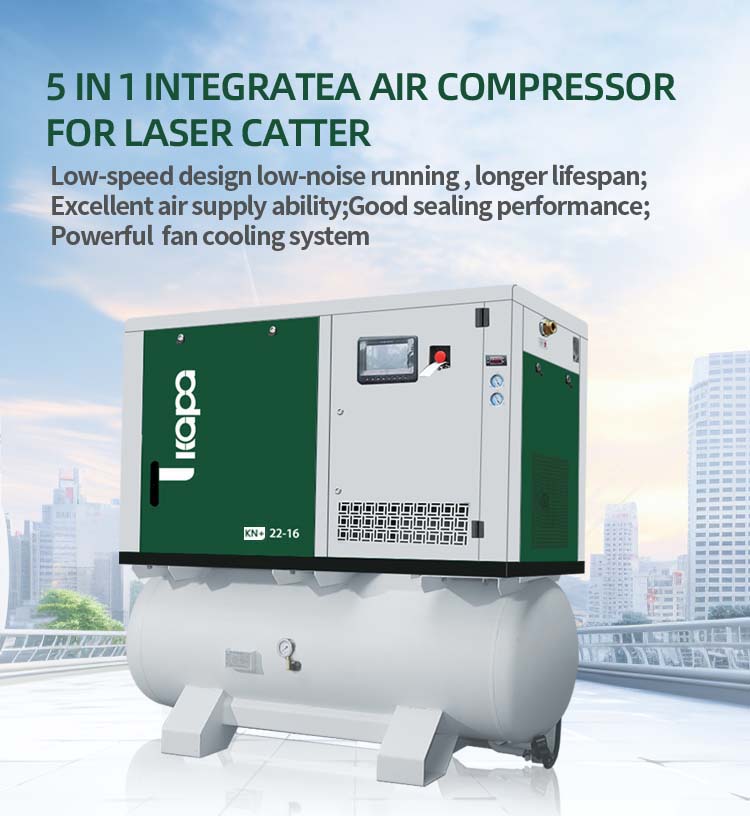What is an Integrated Air Compressor Used For?
Integrated air compressors have become indispensable tools across various industries, providing a reliable source of compressed air for numerous applications. In this article, we will delve into the functionality, history, components, types, advantages, applications, selection criteria, maintenance, environmental impact, and future trends of integrated air compressors.
Understanding the Functionality of an Integrated Air Compressor
Integrated air compressors are mechanical devices that convert power, typically from an electric motor, diesel engine, or gasoline engine, into potential energy stored in pressurized air. This compressed air is then used for various purposes, ranging from powering pneumatic tools to inflating tires and even supplying air for industrial processes.
Evolution and Development
The history of integrated air compressors dates back to the 19th century, with the invention of the first reciprocating air compressor by George Medhurst in 1799. Over the years, advancements in technology have led to the development of more efficient and versatile integrated air compressors, catering to the evolving needs of industries worldwide.
Components of an Integrated Air Compressor
An integrated air compressor comprises several essential components, including a compressor pump, motor, tank, pressure regulator, pressure gauge, safety valve, and various interconnecting pipes and fittings. Each component plays a crucial role in the overall functionality and performance of the system.
Different Varieties and Their Applications
Integrated air compressors come in various types, such as piston compressors, rotary screw compressors, and centrifugal compressors, each suited for specific applications. Piston compressors are commonly used in smaller-scale operations, while rotary screw and centrifugal compressors are favored in larger industrial settings due to their higher efficiency and capacity.
Efficiency and Cost-Effectiveness
One of the primary advantages of 4 in 1 integrated air compressors is their efficiency and cost-effectiveness. By converting electrical or mechanical energy into compressed air, these systems provide a reliable and consistent source of power, reducing the need for manual labor and increasing productivity in various industries.
Diverse Industries and Uses
Integrated air compressors find applications across diverse industries, including manufacturing, automotive, construction, aerospace, healthcare, and agriculture. From operating pneumatic tools and machinery to inflating tires and powering HVAC systems, the versatility of integrated air compressors makes them indispensable in numerous sectors.
Pneumatic Tools
One of the primary uses of integrated air compressors is to power pneumatic tools and equipment. From impact wrenches and nail guns to pneumatic drills and sanders, compressed air provides the necessary force and energy to operate these tools efficiently, making them essential for construction, automotive repair, and manufacturing industries.
Industrial Manufacturing
Integrated air compressors play a crucial role in various industrial manufacturing processes, where they are used to power pneumatic machinery, control systems, and automated assembly lines. Compressed air is used for tasks such as pneumatic conveying, paint spraying, blow molding, and packaging, among others, contributing to increased productivity and precision in manufacturing operations.
HVAC Systems
In heating, ventilation, and air conditioning (HVAC) systems, integrated air compressors are utilized to supply compressed air for pneumatic controls, actuators, and valves. They help regulate airflow, control temperature and humidity levels, and ensure efficient operation of HVAC equipment in commercial and residential buildings.
Medical Applications
Integrated air compressors are also employed in medical applications to power equipment such as dental drills, surgical tools, and respiratory devices. Compressed air is used for tasks such as instrument sterilization, patient ventilation, and pneumatic control systems, where reliability and precision are paramount for patient safety and healthcare efficiency.
Factors to Consider
When choosing an integrated air compressor, several factors must be taken into account, such as the required pressure and flow rate, operating environment, power source, space constraints, and budget. It is essential to select a compressor that meets the specific needs and demands of the intended application.
Ensuring Longevity and Performance
Proper maintenance and care are crucial for maximizing the longevity and performance of an integrated air compressor. Regular inspection, lubrication, cleaning, and timely repairs help prevent breakdowns, minimize downtime, and ensure optimal efficiency and reliability.
Sustainability Considerations
As environmental awareness grows, so does the emphasis on sustainability in compressor technology. Integrated air compressors are becoming more energy-efficient and environmentally friendly, with advancements in design, materials, and operation aimed at reducing carbon footprint and minimizing environmental impact.
In Conclusion
Integrated air compressors play a vital role in various industries, providing a reliable and efficient source of compressed air for a wide range of applications. With their versatility, efficiency, and advancements in technology, integrated air compressors continue to drive productivity and innovation across diverse sectors, shaping the future of industrial automation and sustainability.

评论
发表评论